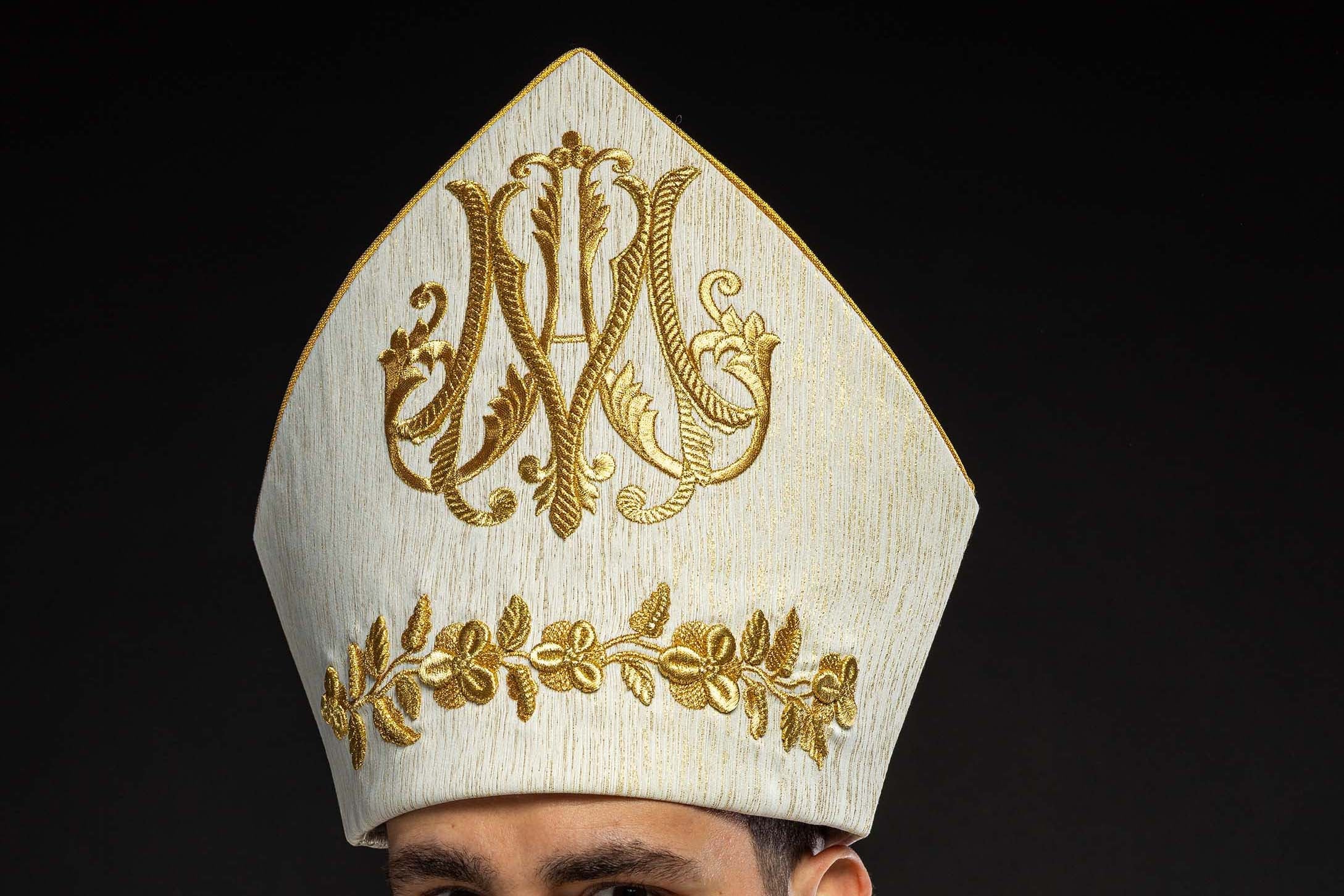
Prayers of the Faithful – How to Create Them Meaningfully?
Prayers of the Faithful – How to Create Them Meaningfully?
The Prayer of the Faithful, also known as the Universal Prayer, is an integral part of every Holy Mass. It is a moment when the assembled community, in unity with the priest, brings before God its petitions, concerns, and thanksgivings, encompassing the entire world. Proper preparation and recitation of the Universal Prayer are crucial for the depth of the liturgy experienced and the engagement of the faithful. So, how do you create Prayers of the Faithful that carry profound meaning and truly reach the hearts of God and people?
1. Understanding the Role and Essence of the Prayer of the Faithful
The Universal Prayer is not merely a formal point of the liturgy but an expression of the universal priesthood of the faithful. Every baptized person has a share in Christ's mission, and through the Universal Prayer, they fulfill their vocation to intercede for others. It is a response to Jesus' call for us to ask the Father for what is needed by the Church and the world. Its purpose is to sensitize the faithful to the needs of others, deepen community bonds, and express concern for the salvation of the world.
What Does the Universal Priesthood Entail?
The universal priesthood of the faithful means that all baptized individuals, regardless of their function in the Church, have direct access to God through Jesus Christ. They participate in Christ's priestly, prophetic, and kingly mission. The Universal Prayer is one concrete manifestation of this priesthood, where the faithful as a community bring their petitions to God.
What Are the Main Intentions of the Prayer of the Faithful?
Typically, the Prayer of the Faithful includes several basic intentions: for the universal and local Church, for leaders of states and the entire nation, for those in need in the world (the suffering, the poor, the hungry, the oppressed), as well as for the assembled community and its intentions. It is important that the intentions are current, specific, and responsive to the needs of the moment.
When Is the Prayer of the Faithful Recited?
The Prayer of the Faithful is recited after the Liturgy of the Word and before the Liturgy of the Eucharist. It is usually preceded by an announcement from the priest, who encourages prayer for specific intentions. After the intentions are recited by a representative or the community, the priest concludes it with an eschatological prayer, directed towards the ultimate fulfillment of Christian hope.
2. Key Principles for Creating Prayers of the Faithful
Creating Prayers of the Faithful requires sensitivity, discernment, and knowledge of the needs of the Church and the world. It is not merely a technical task but a spiritual and pastoral one. Here are some principles that will help in this process:
a) Timeliness and Relevance of Intentions
Intentions should reflect current events and the needs of the Church, the homeland, and the world. They may relate to important anniversaries, holidays, prayer for specific social groups, victims of conflicts, those suffering from illnesses, or individuals experiencing difficulties. Avoid intentions that are too general or repeated every Sunday, unless they are a constant element of the liturgy (e.g., prayer for the Pope).
b) Specificity and Brevity
Intentions should be formulated in a way that is clear, specific, and understandable to all the faithful. Avoid long, complicated sentences. A short but relevant intention is more likely to reach the heart and allow the faithful to engage in prayer.
c) Diversity of Intentions
The Universal Prayer should cover various spheres of life – from Church matters to concerns for the political and social world, to the needs of specific individuals and the community gathered for the liturgy. It is important to maintain a balance between spiritual and material needs.
d) Entreaty, Not Command
The prayer formula should express an entreaty directed to God, not a command or demand. Use phrases like: "Let us pray to the Lord...", "We pray for...", "God, we ask You...".
e) Community Involvement
Encourage the faithful to actively participate in the Universal Prayer. It is sometimes worthwhile to designate various representatives of the community (e.g., altar servers, the choir, members of different pastoral groups) to read individual intentions, which increases the sense of co-responsibility for the liturgy.
f) Adequate Time for Preparation
Preparation of the Prayers of the Faithful should take place in advance. It is a good practice for the team responsible for preparing the liturgy (e.g., animators, lectors) to discuss the intentions together at least a few days before the celebration. It is worth using the liturgical calendar and current events.
3. How to Formulate Individual Intentions?
Formulating intentions requires discernment and sensitivity to the Word of God and the signs of the times. Here are some examples of how you can approach creating intentions:
- For the Church: "Let us pray for the Holy Church, that its witness to God's love may always be clear and appealing to the world. We ask You..."
- For the Homeland and Leaders: "Let us pray for our Nation and all those in authority, that their decisions may serve the common good, justice, and peace. We ask You..."
- For Those in Need: "Let us pray for those who are sick, suffering, and in difficult life situations, that they may experience God's help and support from people. We ask You..."
- For the Assembled Community: "Let us pray for unity in our hearts and in our parish community, that we may be able to build the Kingdom of God daily. We ask You..."
- Occasional Prayer: "Today, as we commemorate [holiday/event], let us pray for [specific group/intention related to the event]. We ask You..."
What Else Can Be Added?
It is worth remembering so-called occasional prayers, which may be related to the current liturgical season (e.g., Advent, Lent, Easter) or specific events in the parish or diocese. A good idea is also prayer for missionaries, those called to religious vocations, families, or youth.
4. Most Common Mistakes When Creating Prayers of the Faithful
Even with the best intentions, you can make certain mistakes that weaken the effectiveness of the Universal Prayer. Here are a few of them:
- Too long and complicated formulas: Make it difficult for the faithful to engage, who may get lost in the content or lose concentration.
- General intentions: "Let us pray for everyone" – such formulations are correct, but they lack the specificity that motivates personal prayer.
- Intentions inappropriate for the liturgy: Introducing intentions that do not fit the character of the Holy Mass or current events.
- Too many intentions: Overloading the Universal Prayer with too many petitions can weaken its impact and the engagement of the faithful. Usually, 5-6 intentions are sufficient.
- Lack of thought in the order: Intentions should be formulated in a logical order, starting with the affairs of the Church and the world, moving to the needs of neighbors, and ending with the assembled community.
- Insufficient preparation of lectors: Those reading the intentions should be well prepared, understand their meaning, and pronounce them clearly and with due respect.
5. Practical Tips for Liturgy Animators
Preparing Prayers of the Faithful is often a team effort. Here are some tips on how to do it efficiently and effectively:
- Team Meetings: Regularly organize meetings of the team responsible for the liturgy to discuss the intentions for upcoming Sundays and holidays together.
- Use Available Resources: Use official Mass forms, which contain sample intentions, as well as liturgical and pastoral literature.
- Track Current Events: Stay up to date with what is happening in the Church and the world. Television, radio, the press, and news portals can be a source of inspiration for current intentions.
- Consultation with the Pastor: Always consult your proposals with the parish priest or other designated pastor to ensure that the intentions are in accordance with Church teaching and current pastoral needs.
- Transmission of Ready Intentions: After determining the intentions, make sure they are clearly written and communicated to the lectors on time.
What If There Is a Lack of Inspiration?
If there is a lack of inspiration, it is worth considering intentions related to the current liturgical season or the specific needs of people from our parish. You can also look for inspiration in the Holy Scriptures – often a passage from the Gospel read during Mass can become the basis for creating a relevant intention.
6. Creating Prayers of the Faithful as an Expression of Concern for the Church and the World
Prayers of the Faithful are not only an element of the liturgy but, above all, an act of love and concern for the Church, our families, the Homeland, and the entire world. When we create them meaningfully, with hearts open to the needs of others and with faith in God's mercy, they become a powerful tool for transformation and building the Kingdom of God. Let us remember that every well-prepared prayer is a testimony of our faith and commitment to the life of the community.
How Do Our Prayers Affect Others?
Well-composed and sincere Prayers of the Faithful can inspire others to deeper reflection, to prayer in their own hearts, and to concrete actions for those in need. They are an expression of our unity in the community of the Church and our common pursuit of holiness.
Is It Worth Spending Time Preparing Prayers?
Definitely yes. The time devoted to carefully preparing the Prayers of the Faithful is an investment in the quality of the liturgy experienced and in the spiritual development of the entire community. It is a concrete way to serve God and people.
Careful preparation of the Prayers of the Faithful is crucial for their deep meaning and impact on the community. If you are looking for ready-made solutions or inspiration to create unique intentions, we encourage you to familiarize yourself with our offer of high-quality liturgical vestments and accessories at haftinausa.com. Our products, made with attention to detail and symbolism, can further enrich the experience of the liturgy.
```




